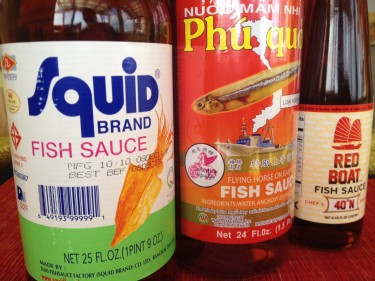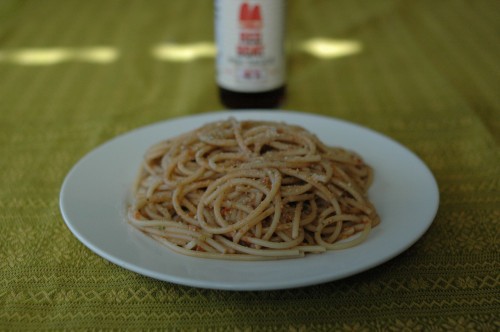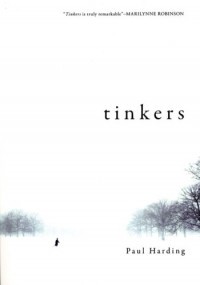Marshall, Stacked
“Guitar amp innovator Jim Marshall — dubbed ‘the Father of Loud’ for creating kit used by some of the biggest names in rock — has died aged 88.”
Kanye West With DJs Khaled and Pharris, "Theraflu;" Kendrick Lamar And Dr. Dre, "The Recipe"
At this point, it’s hard to imagine what’s making Kanye West sound so cranky. The fact that his mink coat is dragging on the floor, I guess? Or that a beautiful woman he summoned to his hotel room arrived wearing underpants? Maybe it’s just that he has a head cold. You’re all stuffed up, sore throat, sinus pressure. That’ll put anybody in a rotten mood. Whatever it is, for the music’s sake, here’s hoping he doesn’t cheer up. ’Cause this song, which debuted on Funkmaster Flex’s show on Hot97 just last night, sounds great.
With it’s emphasis on the cold, and DJ Pharris shouting out Windy City landmarks at the end, “Theraflu” stands as a Chicago anthem. (I have no idea what Miami’s DJ Khaled is doing on the song. I never do. He is an extremely exuberant presence in hip-hop, the genre’s greatest cheerleader, but I can’t think of a single instance where he’s added anything appreciable, musicwise. Everybody seems to like him as a person. He’s probably just a really nice guy, and obviously a skilled networker, good at making introductions. Maybe he introduced Kanye and Pharris and that’s why he gets a credit? I don’t know. Maybe I’m missing something.)
Earlier this week, rising L.A. rapper Kendrick Lamar recruited a very, very, very important neighbor of his to make an anthem for their own city. Dr. Dre sounds strong on what could be the cure for Kanye’s ills, as well as a highly effective promotional campaign for the municipal travel bureau.
There have been others like it, of course.
All different sorts.
Everybody who lives there, always advertising.
There are a million of them. But this might be favorite.
Chicken Full Of All Sorts Of Stuff You Don't Want To Know About
It’s not just doody in your chicken; there might also be arsenic in there.
"Almost Alcoholics" Just Not Trying Hard Enough

See if any of these statements apply to you:
You drink to relieve stress.
You often drink alone.
You look forward to drinking.
Your drinking may be related to one or more health problems.
You drink to relieve boredom or loneliness.
You sometimes drive after drinking.
You drink to maintain a “buzz.”
Your performance at work is not what it used to be.
You aren’t comfortable in social situations without drinking.
You find that drinking helps you overcome your shyness.
If you agreed with five or more, we should totally hang out. Otherwise, keep at it, I know if you give it your best you will get there eventually.
Photo by mdblk1984, via Shutterstock
It's Time To Set Your Fish Sauce Free
It’s Time To Set Your Fish Sauce Free
by Ben Choi

Sometimes it seems to me that practically everybody in America is a little uptight when it comes to Asian fish sauce. I mean, some folks are closed off to any condiment that might taste or smell “fishy,” while others are intent on dusting off the hand-hammered iron wok and slavishly chasing the dragon on that authentic dining experience in Phuket. To the former group I’d say, the tree of globalism can only grow tall when good men and women eat challenging ethnic food. Also, fish sauce is really not that fishy. To the latter: I respect that purist’s sensibility, but it’s also okay to use authentic Asian things in nontraditional ways. After all, look what the Asians have done with our Spam and Kareem Abdul Jabbar. It’s fine to color outside the lines here a little.
In my view, Asian fish sauce is an essential condiment, and I mean that in both senses of the word: It’s essential I have some in the house; and it imparts a flavor essence, a roundness or lip-adhesive quality that can and should be used in ways that exceed tradition. Think of how radically the uses of tomato paste, Parmesan cheese, and Campbell’s cream of mushroom have expanded beyond their initial roles in American and European cuisine. Heck, think of ketchup. (The word ketchup, by the way, is derived from the name of an Asian fish sauce — Henry Heinz could not have predicted I’d be using his sauce on my gyoza.)
Of course, using fish to flavor sauce is by no means an exclusively Asian thing. A fermented fish condiment called ‘Garum’ was widely used by the ancient Romans. Imagine how necessary that little injection of umami would be to soldiers subsisting mostly on spelt porridge. Today, Italians use a product called Colatura di Alici that’s made in a very similar way to Asian fish sauce. Anchovy is also a main flavor element in Worcestershire sauce and the even more peculiarly English foodstuff with the suggestive name “Gentleman’s Relish.”
The fish sauce we’re talking about here, though, might more properly be called nam pla or nuoc mam; though I believe these are just the Thai and Vietnamese terms for ‘fish sauce.’ By whatever name, this stuff is produced by packing fresh anchovies with large amounts of salt, and sometimes sugar, and allowing the mixture to ferment over the course of months (sometimes to over a year), and finally filtering out the clear, dark caramel-colored fluid. Widely available in the U.S., it comes primarily from Thailand. That said, a couple of Thai brands I’ve tried are marketed as nuac mam, rather than nam pla, and are said to be produced in the Vietnamese style, which results in a milder, more complex flavor profile. I prefer the milder varieties, so I guess I’m a nuoc mam devotee. And I was quite pleased to find out that a super-premium brand of genuine Vietnamese fish sauce is now available in the States.
Here are some notes on a few of the brands I was able to purchase at some Asian specialty markets near my house and one Anglo gourmet shop:
Squid Brand: This is a fairly typical Thai brand, salty with a fairly fishy, robust flavor. I’d use it primarily in very strongly flavored, cooked Thai dishes like curries stir frys. Under $2 for a 24-oz.bottle.
Three Crabs: This is the brand most American foodies rely on. It’s from Thailand but made in the Vietnamese style. Mild and slightly sweet, this sauce pretty good for all-around use. Please note that Three Crabs is the only one of this group that incorporates hydrolysed vegetable protein as a flavor enhancer. Those sensitive to MSG or leery of food additives should take this into account. Under $4 for a 24-oz.bottle.
Flying Horse on Earth Brand: Salty but mellow. Good all-around fish sauce, but keep the saltiness in mind. I find I like to use this one as a go-to cooking fish sauce and used it on the shortribs and enchilada sauce. I love the name and logo, too. Under $3 for a 24-oz. bottle.
Red Boat 40°N: This is the super premium stuff, first-press and actually from Phu Quoc, Vietnam, an island that is said to produce the best fish sauce . The N-designation refers to grams of nitrogen per liter. Very clean tasting, more subtle, no off tastes at all. It’s pretty dear, so I’d use this for mildly flavored dishes and non-cooking uses like in vinaigrettes or on pasta. I had to go to a pretty gourmet, white-people shop in Berkeley to get this. Under $7 for an 8.45-oz. bottle. (Note that Red Boat also comes in a 50°N version that is said to be even higher quality and more complex. It’s currently out of stock and runs about $10 for 80 ml.)
I’m sure you’re aware of how fish sauce can be used in Thai curries, Vietnamese fried-rice dishes and dipping sauces. As seasoned internet users, you have available to you all kinds of authentic uses of nuoc mam and nam pla. So I’ve focused here on fish sauce as a general condiment, for use on dishes that you and I haven’t thought up yet, or as enhancements to your mama’s traditional recipes.
CLAYPOT BONELESS BEEF SHORT RIBS BRAISED IN RED WINE
This is kind of a fusion dish that combines the western technique of wine-braising short ribs with both Asian and Western seasonings. I use the clay pot entirely for looks. I recommend serving it over a nice root vegetable puree, like celeriac and Dutch yellow potatoes.
2 ½ to 3 lbs. boneless beef short ribs cut crosswise into 3-inch pieces
1 tsp. kosher salt
½ tsp. ground fennel
½ tsp. ground sichuan peppercorns
1 tsp. canola oil
½ tsp. sesame oil
1 cup dry red wine
¼ cup red wine vinegar
¼ cup hoisin sauce
1 tbsp. gochujang
2 tsp. dark soy sauce
1 tsp. of regular soy sauce
2 tbsp. fish sauce
1 tsp. granulated garlic
2 tsp. granulated onion
2 cups water
1 cup sliced fresh shiitake mushrooms sliced thin.
3 green onions sliced crosswise into 2-inch sections
additional ½ tsp sesame oil

Combine salt, fennel and sichuan peppercorns thoroughly in a small bowl you can pinch from. Season the short ribs on all sides, but don’t be too generous, as there are a lot of salty ingredients to follow. Reserve remaining seasoning for later.
Preheat oven to 350°. In a dutch oven, heat canola and sesame oil over medium-high heat to shimmering. Brown ribs well on all sides. As the ribs brown combine next nine ingredients (red wine to granulated onion) in a bowl and whisk in water. When all ingredients have dissolved, add liquid to pot and bring up to a simmer. Cover and braise in the oven for about 2 hours.
When meat is fork-tender, remove pot from oven. Using tongs, layer ribs inside clay pot; cover and set aside in the residual heat of (turned-off) oven. Put dutch oven back on stove, and vigorously simmer uncovered for a 20 minutes to reduce volume of braising liquid. Add mushrooms and green onions and simmer for an additional 10 minutes. Season to taste with reserved salt-seasoning mixture from first paragraph. Incorporate reduced liquid into warm claypot and serve.
RED ENCHILADA SAUCE
2 dried New Mexico chiles, stemmed and seeded and cut into ¼-inch strips
2 Ancho chiles, stemmed and seeded and cut into ¼-inch strips
2 tsp. whole cumin seeds
2 tsp. olive oil
¾ cup chicken stock
1 15-oz. can of tomato sauce
1 tsp. granulated onion
½ tsp. granulated garlic
the juice of ½ lime
2 tsp. fish sauce

Heat up a cast-iron skillet over medium high heat for about 5 minutes. Add chiles and shake the skillet like you’re making popcorn for about a full minute. Add cumin seeds and continue moving stuff around until seeds are browned and the fragrance is quite heady. Set aside in a bowl to cool. Place cool chiles and seeds in a spice mill and grind to to the consistency of medium-fine sand.
Heat olive oil in a skillet over medium-high heat and add spice powder,combining to form a paste. Quickly add chicken stock, tomato sauce, and onion and garlic. Stir well to combine and bring to a simmer. Squeeze in lime juice and add fish sauce. Reduce heat to medium low and simmer for 5 more minutes, stirring occasionally. Makes about 1¾ cups.
SICILIAN WALNUT PESTO
¼ cup chopped walnuts
1 pound grape tomatoes
½ cup packed basil leaves
⅓ habanero (from a jar), stemmed, seeded and diced
1 pepperoncini (from a jar), stemmed, seeded, and diced
½ cup extra-virgin olive oil
1 tbsp. fish sauce (use the Red Boat)
kosher salt to taste
toasted bread crumbs for topping

Toast walnuts in a cast-iron skillet over medium high heat until they’re faintly golden-brown and fragrant. Set aside to cool.
Place cool nuts along with tomatoes, basil, habanero, and pepperoncini in the bowl of a food processor. Pulse until smooth, scraping down sides of bowl once or twice. Run processor for about thirty seconds while drizzling in olive oil and fish sauce. Adjust salt to taste. You should now have enough pesto for about a pound of the pasta of your choice. Top with toasted bread crumbs just before serving.
CLAMATO MARY
9 oz Clamato
1 ½ shots of vodka
5 dashes tabasco
1 dash of Worcestershire sauce
the juice from ½ lime
¼ tsp horseradish
½ tsp fish sauce (use the Red Boat)

Combine all ingredients well and serve over ice in a tall glass with your preferred garnishes.
Previously: Gochujang, Habanero Salsa , and Pomegranate Molasses
Ben Choi will soon go on a diet.
The Tooth Tattoo
What’s that, you say? A “graphene sensor” that is tattooed on the enamel of my teeth and tells me when to go to the dentist? I believe I will pass, thank you all the same. ALSO OH MY GOD WHY DO YOU PEOPLE KEEP REMINDING ME OF MY DENTAL DIFFICULTIES?
In Defense Of Boredom

Did you read the excerpts from the forthcoming collection of Susan Sontag’s journals in the Times this past weekend? I really liked the part where she said, “Most of the interesting art of our time is boring.” I agree with that a lot. I don’t know if I’d say “most of,” but I like a lot of boring art, and boring things, and often find myself defending the benefits of boredom. (This post could quickly devolve into a semantical discussion of the precise definition of “boredom,” but I will elide that. I also liked the part in the article where Sontag said, “I don’t care about someone being intelligent,” for insecure selfish reasons.)
I don’t know as much about looking at paintings as I wish I did. Is Jasper Johns really “boring,” as Sontag said?
I guess I can understand what she’s talking about. Yes: more boring than, say, the terror induced by “Guernica” or “The Scream,” or the swirling ecstasy of “The Kiss.” Is Andy Warhol boring? Transfixed by the design of a soup can? Printing print after print after print at a place called The Factory? Yes, I can see it. Boring. And I very much like to look at the paintings of Jasper Johns and Andy Warhol. The interestingness lies in the subtle change or glitch you find in a vast field of sameness. Or in contemplating repetition itself. (Or something?) And Sontag noted Beckett, too, as “boring.” And, sure, that seems like that was much of the point, at least from what I know. Boring and great. Vaclav Havel’s The Memorandum is like this, too. And maybe Passover and the best Jewish jokes, too.
Definitely some of my favorite books might be legitimately described as boring. Nicholson Baker’s The Mezzanine, famously about nothing more than a twenty-minute lunch break from an office in a Rochester mall — stops to buy shoelaces and a sandwich, a visit to the men’s room. Philip Roth’s Everyman, which tells a story of a not-so-extraordinary life. Paul Harding’s Tinkers, so slow and ruminative as it details the small moments and memories which make up the same for us all. I love it, but more than one person to whom I’ve recommended it brought back a verdict of “it’s boring.” And I can’t much argue that it’s not, even though it won the Pulitzer Prize when it was published, three years ago. It is boring, I guess. In a beautiful, and, to me at least, profound way. Tinkers reminds me more of Marilynne Robinson’s writing than anything else — its care in word choice and pacing elevating its sentences to poetry, lulling you into something like a narcotic state. It renders its gorgeous, rural-Maine setting exquisitely, too, and is a lot about death. Death can help anything hold one’s attention. But even the death is presented in a way that might be described as boring. Which I guess is nice, for death.
I think of Tinkers as a lot like the literature equivalent of the music of one of my favorite rock bands, a trio from Duluth, Minnesota called Low.
Low makes very slow, very simple rock songs, and sings them very quietly. The first time I saw them play a concert, at the Mercury Lounge, in 1996, the audience was so quiet, I could hear the flickering of candles mounted on the wall. After they played a cover of Joy Division’s song “Transmission” (which is funny because as the chorus exhorts you to “dance, dance, dance,” the tempo at which they played it made doing so impossible), the singer and guitarist Alan Sparhawk said, “This next song is just like the previous one. It starts with Zak on bass. Then I come in with a melody and start singing over some chords. Then Mimi joins me on the chorus. We don’t usually like to do two of these songs in a row, but tonight, we’re exposed.”
This is another funny little in-joke, because pretty much all of Low songs follow that format. I interviewed Alan soon after that concert for an article I wrote for ego trip magazine and he told me:
We wanted to experiment with some things that aren’t explored as often. We wanted to get away with as little as we could and see what we could pull off as a band playing as quiet as we could.
What Low explores, I think, and maybe the same can be said for Jasper Johns and Paul Harding, too, is the space between stuff. Action, excitement. The space between stuff happening. I suppose that’s the key to good, interesting boring art. When we’re bored into a state of looking for things to capture our interest, we find them — in unexpected places in the world around us and and maybe even in our own heads. (And maybe “lulled” is a better word here than “bored,” again the semantics.) Slowing our thinking down, as we look at, or read, or listen to something, is a wonderful gift an artist can give us. Especially in our increasingly speeding-up, over-stimulated world. Thank you, boring artists, for boring us!
(I would imagine the above could be said, and likely has been said, and probably more eloquently, about stuff like the minimalism of John Cage, or the drone of “no-wave” groups like Suicide or “shoegaze” rock. The Velvet Underground belongs somewhere in this discussion, surely, as does the one-note guitar solo Neil Young plays in “Down by the River,” which I often think of as an important moment in the genesis of punk rock. I know it has been said about Japanese art. The idea behind zen meditation being that you basically bore yourself into a sleep-like but observant state where mysterious inspiration can more readily strike. And this, a philosophy professor told me in a class I took in college, is the idea behind raking the sand in a rock garden with such perfect uniformity that the slightest gust of wind can come and cause a little deviation — and that’s where the beauty is found. And then you start raking it all over again. This is expressed in painting, too — the tiny glitch in an otherwise flawless image being the good part. Junichiro Tanizaki’s In Praise of Shadow is a good book to read about these ideas. I read that in that philosophy class.)
Okay, one last Low-is-boring in-joke: there’s a song on their second album, “Long Division,” called “Violence.” It’s one of their best songs, and sometimes at their concerts, people in the audience request it. It’s very funny to hear calls for “violence!” at concerts as still and staid as those that Low plays. Also, the only violence that occurs in “Violence” is the tearing out of pages from a dictionary.
Low is good music to fall asleep to. I could listen to it all day, and sometimes do.
Oh, this is also why I like baseball. Because it’s so boring. Tomorrow’s opening day! And I can not wait to be bored for the whole long, long, exquisitely dull, 162-game season.
The Threat Of Psychic Attacks! Heidi Julavits Explains It All To You
by Jenny Davidson

Heidi Julavits’s fourth novel, The Vanishers, sits at the perfect intersection of cerebral challenge and guilty pleasure. In the world of The Vanishers, psychic academies exist to foster talents like astral projection and mental telepathy; Julavits’ characters express hostility and attempt to dominate one another by way of psychic attacks that manifest in a horrifying array of physical symptoms (virulent rashes, bleeding gums, gastrointestinal distress). Across all of her novels, Julavits has explored women’s rivalries and what it means to want to disappear and reinvent oneself elsewhere in a different guise. The Vanishers calls to mind Kazuo Ishiguro’s The Unconsoled and William Gibson’s Pattern Recognition, and the novel’s haunted me ever since I read an advance copy this fall. I especially wanted to know more about the psychic attack and how it works: Julavits, my neighbor in a Columbia-owned apartment building in Morningside Heights, was kind enough to satisfy my curiosity in this email exchange.
Jenny Davidson: The description in the novel’s opening of the major physiological symptoms of a psychic attack is so convincing that I feel you must have undergone one at some point yourself. Why do acid reflux, bleeding gums and multiple rashes so convincingly speak to the fact of psychic attack?
Heidi Julavits: What’s great about psychic attacks — if you’re the attacker — is that it takes so long to diagnose them (this per their definition in Psychic Self Defense by Dion Fortune, which is where I first encountered the phenomenon) because they “present” as usual symptoms, if in unusual combinations. Thus your attackee spends quite a bit of time inexplicably miserable — again, according to Fortune — which is the point of psychically attacking a person in the first place. Maximum mysterious suffering.
Whether or not I believe in psychic attacks, the idea appealed to me for many reasons, and not just because I’ve been a rash sufferer in my day. Symptoms like rashes and upset stomachs and migraines (unlike, say, sore throats), especially when no quick diagnosis is available, are often attributed to stress. In other words — you’ve made yourself sick. The horror of your affliction becomes magnified if you’re seen as the person to blame for it. This “metaphorical” self-sickening template can shift into more medically valid territory — the world of the auto-immune disorder, for example. Some auto-immune disorders, however, to close the circle, are seen as stress-induced.
But if you’re being psychically attacked — hey! It’s not your fault! Someone else is making you sick. And it is all in your head. A person has psychically invaded your mind, and your body becomes corrupted, physically, by the mental pathogen. So this metaphorical-literal diagnostic collapse — plus my own tendency to get rashes — yeah. I found it pretty cathartic territory in which to muck around for 300-plus pages.
The main thing that I remember about Alasdair Gray’s Lanark, which I read as a teenager, is its amazing depiction of skin disease. Do you have any other favorite literary depictions of rashes and other dermatological disorders?
Nicholson Baker in U and I reads a lot into the psoriatic condition he shares with John Updike, i.e. he figures they must have a lot in common if they both suffer from the same skin disorder. That made a lot of sense to me; these visible bodily upsets can be viewed as the equivalent of having your secret — often shameful — inner self tattooed on your skin. If you have the same tattoo as another person, odds are you’ll get along.

Do you have any psychic powers yourself?
I can turn off street lamps by walking beneath them.
There’s an amazing passage where your narrator, her powers disabled, reflects on the experience of watching foreign films without subtitles or dubbed dialogue: “I’d become gifted at extrapolating story lines without the aid of a single comprehensible line of dialogue. These movies also made me miss my psychic forays less, these oblique glimpses into the lives of cinema strangers functioning as a plausible substitute.” I am fascinated by the truth of this observation and curious about how you came up with it. Have you ever had a period of watching undubbed foreign films, or was the origin of the insight more oblique?
I have lived in countries — for example, Japan — where I’d pay to see an English-language movie, and if it were dubbed in Japanese or one of the many other languages I don’t speak, I’d be reduced to lip reading, plus a lot of gestural interpretation. Once you get over the annoyance, it can be really instructive to experience a visual medium purely visually; you can discover a lot about how a movie is put together, but also to what degree people can accurately (or extracurricularly) communicate ideas and feelings without the use of words.
The spiritualism of the late 19th and early 20th centuries is permanently associated in my mind with the technologies and practices of that era: stenography, recording devices for dictation, radio, light projection, etc. How do email and the internet inflect the practices or potentialities of modern-day psychics?
“Psychic activity,” depending on whom you talk to, is seen as wave-based, meaning it’s a form of regularly available energy that certain people can harness or conduct. Do a quick Google and you’ll stumble upon, for example, an assertion like this: “Psychic powers work on two different levels: telekinesis on the delta wave pattern while telepathy is on an upper band.”
Given we’re surrounded by bandwidth and wireless signals, it struck me as a really great time to be a) a psychic and b) a dead person trying to communicate with the living. Wouldn’t it be way easier to hijack an email then it would be to manipulate more mechanical communication methods, like a Ouija board? Which is why my esteemed psychic scholar character, Madame Ackermann, makes a name for herself by writing a book called E-mails from the Dead. And which is why I have a special filter on my email account that junks unwanted missives from the astral plane.
Why are social networks a boon for psychic attackers?
I was having fun with the virus metaphor — you can get a computer virus from an email, why not an actual illness? Why couldn’t you be psychically attacked? Social networks thus, could raise the attack stakes considerably. Your identity is on display; you’re that much more vulnerable to malevolent infiltrations. But the infiltration possibilities run both ways. As a visitor to these sites, you risk encountering information that you’d sometimes wish you hadn’t. I recently spoke to a woman who Twitter-feed spied on a guy who’d dumped her, and thus she kept regular tabs on his new fabulous dating life, while also, inevitably, wishing terrible things to happen to him and his new girlfriend. This took a hefty psychological toll on her. Yet she couldn’t not do it. She was like one of those psychics who can’t stop seeing visions of future plane crashes and apocalypses. I feel like that, sometimes, especially after publishing a book. We’ve all become potentially helpless in the face of readily available information, even if it’s information that’s bad for our health.
Jenny Davidson teaches in the Department of English and Comparative Literature at Columbia University and blogs at Light Reading. She has just finished a novel called The Magic Circle.
